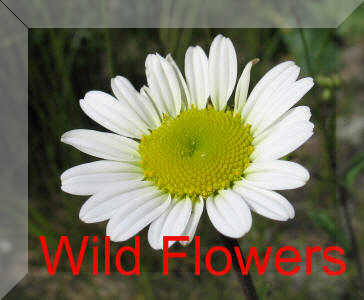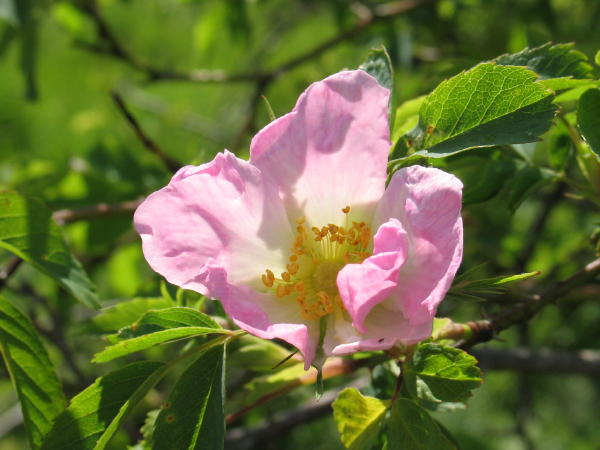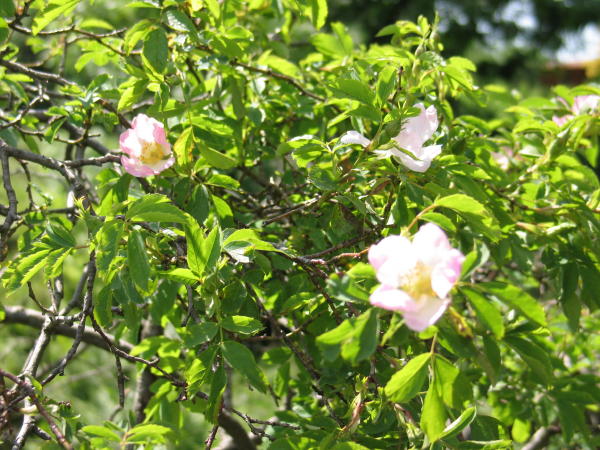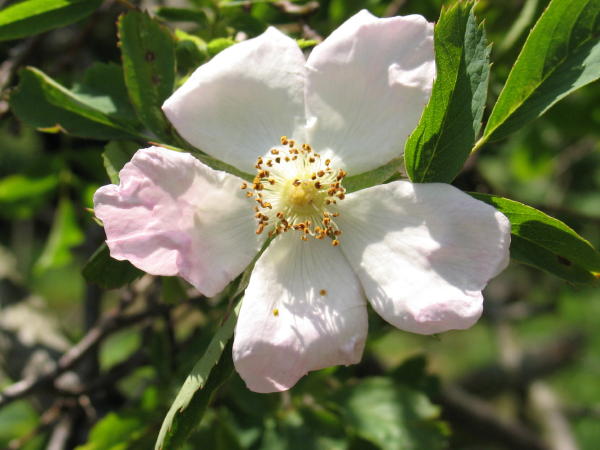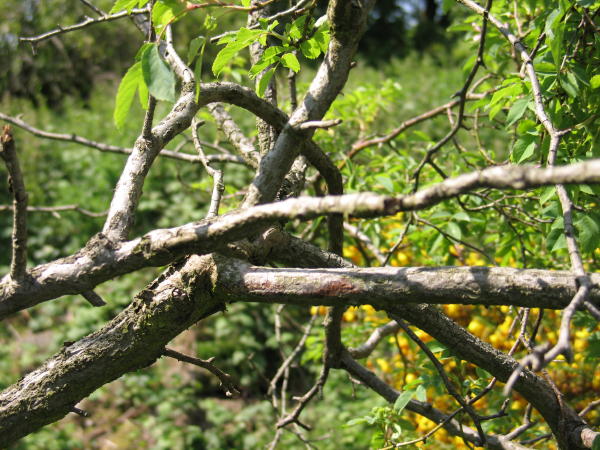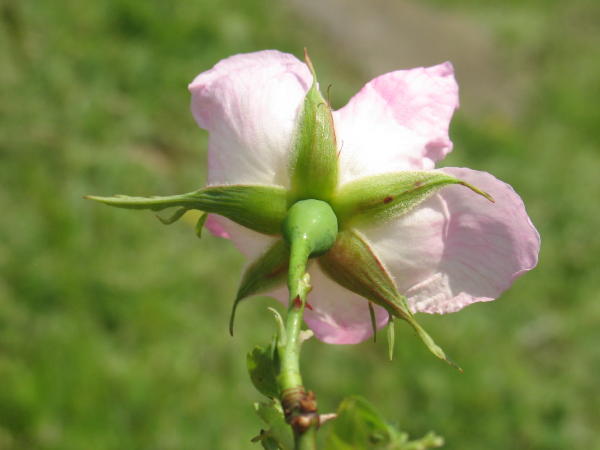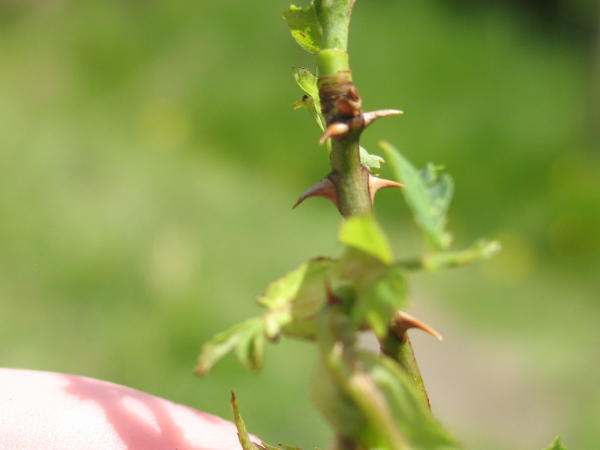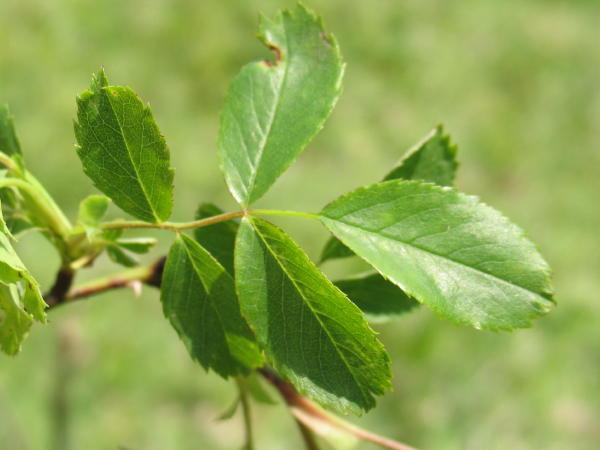BACK TO

Family Rosaceae
AKA Wild Briar.
Flowers
The white or pink, 5-petalled flowers are 4-6 cm across and in clusters of 1-5. They open in June and July and develop into red hips ripe in autumn. The styles in the centre of the flower are not joined together into a persistent, slender column. There is great variety between different dog rose plants and many hybrids exist. This makes indentification difficult as all forms are very similar.Flowering period is usually in June and July. They have 5 petals and these can vary from white to a light pink. The flowers are scented
Leaves
The leaves are compound. They are alternate and each has 5-7 leaflets. are usually hairless and dark green. The underside of the leaf is lighter. Leaves usually hairless, often with glands on the teethThis is the common rose of English hedgerows in summer.
The hips are rich in Vitamin C and were collected to make rose-hip syrup during World War II.
Dependent Ecology
It is attacked by many insects, notably a gall-forming wasp which produces balls of crimson 'moss', called Robin's pin-cushions, on the leaf stalks. Dog rose is a host of a small gall wasp (Diplolepis rosae) which lives in a bright-red gall called a "robin’s pincushion". It has nothing to do with robins, but is a maze of up to 60 chambers, each containing a larva. Plants make galls as a protection when attacked by insects, fungi, bacteria, mites and small worms.Dog Rose is the food plant of the caterpillars of the following moths - V-Pug, Little Thorn, Shoulder Stripe, Barred Yellow and Streamer
Fruits
Dog rose fruits are bright red, ripening in September and into October.The rose doesn't have thorns, but spines. A thorn is a modified branch or stem and is made from the same substance as the stem itself.Habitat
The most common place to find the dog rose is in hedges. It also grows on poor meadows, woods, scrubland and at the woodland edge. Up to 3 m tall with long arching stems. Very variable. Dog-rose is a deciduous shrub, up to 3 m or more in height with strong arching branches. It spreads by suckers into woodland margins, scrub and hedgerows. It thrives on a wide range of soils, except very dry or waterlogged ones.The long arching stems are green to purple and have strong, curved prickles, on a base 15 mm long they catch onto surrounding shrubs.The DOG ROSE (R. canina) is a flower of the early summer, its blossoms expanding in the first days of June and being no more to be found after the middle of July. The general growth of the Dog Rose is subject to so much variation that the original species defined by Linnaeus has been divided by later botanists into four or five subspecies. The flowers vary very considerably in colour, from almost white to a very deep pink, and have a delicate but refreshing fragrance. The scarlet fruit, or hip (a name that has come down from the Anglo-Saxon hiope), is generally described as 'flask-shaped.' It is what botanists term a false fruit, because it is really the stalk-end that forms it and grows up round the central carpels, enclosing them as a case; the real fruits, each containing one seed, are the little hairy objects within it. Immediately the flower has been fertilized, the receptacle round the immature fruits grows gradually luscious and red and forms the familiar 'hip,' which acts as a bait for birds, by whose agency the seeds are distributed. At first the hips are tough and crowned with the fivecleft calyx leaves, later in autumn they fall and the hips are softer and more fleshy
19398 IMAGE (C) 2008 COLIN DUKE
19405 IMAGE (C) 2008 COLIN DUKE
19408 IMAGE (C) 2008 COLIN DUKE
19412 IMAGE (C) 2008 COLIN DUKE
19415 IMAGE (C) 2008 COLIN DUKE
19417 IMAGE (C) 2008 COLIN DUKE
19420 IMAGE (C) 2008 COLIN DUKE
